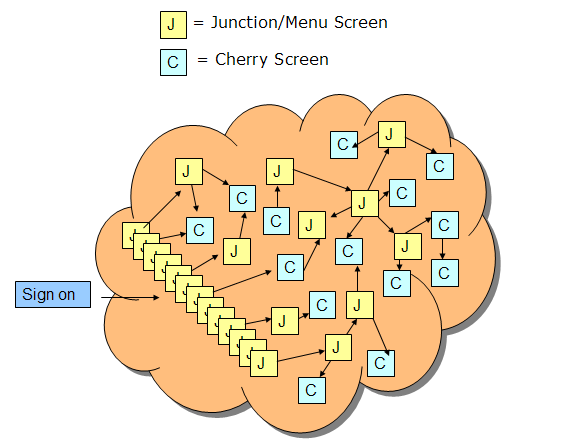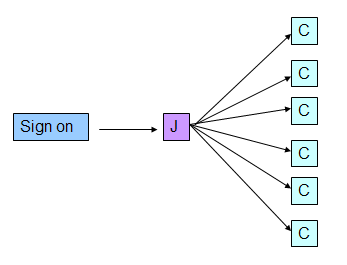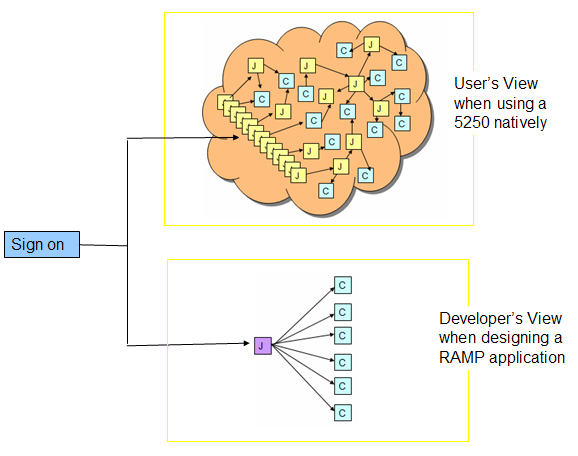A RAMP Design Approach – Using a Single Junction Point (SJP)
A complex 5250 application that RAMP is being applied to may be visualized like this:

A 5250 user signs on and navigates around a cloud of menus/junctions to reach the "cherries" (5250 destination screens) where they do useful work.
The RAMP choreographer is able to follow these navigations and working with it you can define the various navigations required to move around in the cloud.
To a RAMP developer the identification of the junctions and the generation of their navigation scripts may be a time consuming and rather mundane job.
From the RAMP developers point of view the whole process would be easier to handle if the 5250 application was actually structured like this:

Here a single junction point (or program) controls access to every 5250 destination screen.
If the 5250 application was structured this way then designing a RAMP application would be simpler and faster because:
- Only a single junction needs to be defined and scripted.
- The invocation scripts for the destination screens are simpler and standardized.
This rest of this section describes ways that you might set up this type of view of a 5250 application.
This approach is called the Single Junction Point (SJP) model.
The SJP model cannot be applied to every type of application, but where it can be applied it may represent a saving in the time taken to develop a RAMP application.
Essentially a SJP approach means that two different views of an application exist:

To make this programmatic view of the world the System i 5250 program  needs to already exist or to be created.
needs to already exist or to be created.
Let's call this special program the SJP (Single Junction Point) program 
A kind of  already exists on all System i system.
already exists on all System i system.
It is a program called QCMD (or Command Entry Display) and from it almost any 5250 application can be invoked in some direct or indirect way. However using QCMD is not acceptable to many sites for security reasons, so the rest of this material discusses various ways you might create your own specialized and some of issues and additional benefits that might arise.
and some of issues and additional benefits that might arise.
Is an SJP really that simple in a real application?
Can SJP do the other useful things?